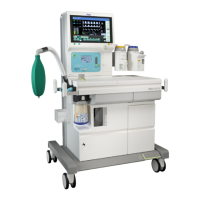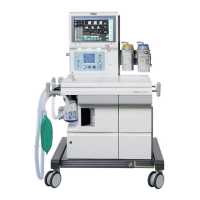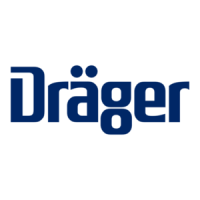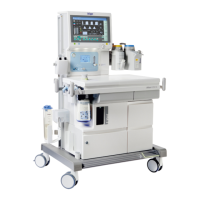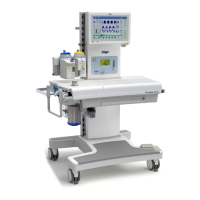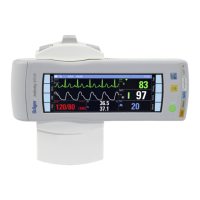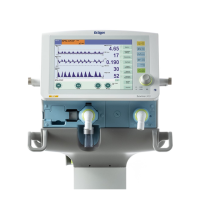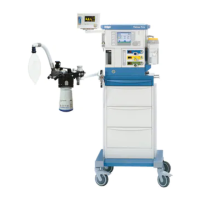Monitoring
Instructions for Use Apollo SW 4.5n 167
Part Number: 9053586, 3rd edition
xMAC display (MAC multiple)
The MAC value is a simple navigation aid for
anesthetic gas metering.
Apollo indicates the MAC multiple (xMAC), which is
determined from the present expiratory
measurements and the age-dependent MAC values.
In the gas of gas mixtures, the respective multiples
for nitrous oxide and the anesthetic agents are added
in accordance with the following equation:
Example:
Exp. Sev. = 1.5 Vol.%
Exp. N
2O = 60 Vol.%
Age = 10 years
MAC
age-corrected of Sev.: MAC = 2.2 Vol.%
MAC
age-corrected of N2O: MAC = 125 Vol.%
xMAC = 0.7+0.5=1.2
The influence of other medication (opiates or intrave-
nous hypnotics) is not taken into account when cal-
culating MAC values.
Automatic agent alarm activation
Figure 88. Automatic alarm limitThe lower alarm limit of an anesthetic agent is
intended to help the user prevent patient awareness
during a case. Examples of problems which, if
ignored or unnoticed, could lead to patient
awareness include leaks in the breathing circuit, an
incorrect fitted vaporizer, or an insufficient anesthetic
gas supply to a vaporizer.
The alarm limits for the anesthetic agents have to be
activated manually and are often not used for that
reason. Apollo provides an alarm management
system for the xMAC level, which is automatically
activated when the expiratory xMAC reaches about
0.3.
After activation (1 in Figure 88), the automatic alarm
limit adapts to the level of anesthesia supplied. It
adapts only to increasing xMAC values. Apollo
generates an advisory message ‘MAC low’ as soon
as the expiratory xMAC value falls below the alarm
limit (2 in Figure 88).
xMAC=
exp. conc. agent
1
+
exp. conc. agent
2
+
exp. conc. N
2O
MAC
age-corrected agent1 MACage-corrected agent2 MACage-corrected N2O
t
1.0
0.3
1
2
3
xMAC
insp. xMAC
exp. xMAC
lower alarm limit
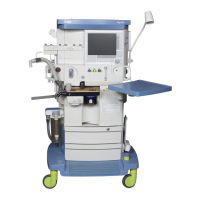
